Hyaluronic Acid Capsules
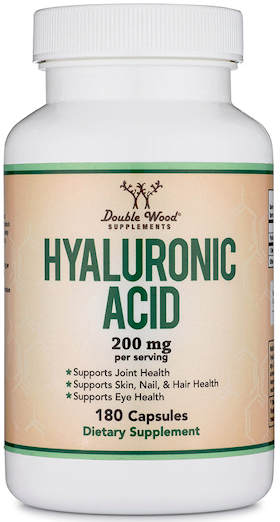
Hyaluronic Acid Capsules — Deep Support for Joints, Skin & Connective Tissues
What Our Hyaluronic Acid Supplement Is and Why It’s Unique
Hyaluronic acid is one of the body’s master hydration molecules. It is a naturally occurring glycosaminoglycan found in your cartilage, synovial fluid, skin, eyes, gums, and other 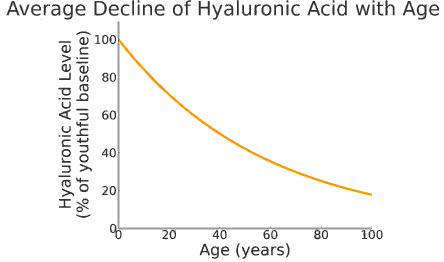 connective tissues. It behaves like a microscopic sponge, gripping and holding water to create cushioning, glide, and resilience.
connective tissues. It behaves like a microscopic sponge, gripping and holding water to create cushioning, glide, and resilience.
With age, stress, inactivity, and environmental damage (such as excess sugar, UV exposure, and chronic inflammation), the body’s stores of hyaluronic acid gradually decline. Joints can feel less cushioned, skin less plump, and tissues less resilient. Our Hyaluronic Acid Capsules are designed to replenish this critical molecule from within, in a form that your body can recognize and use.
Each capsule ouf our Hyaluronic Acid provides 200 mg of high-quality hyaluronic acid in an easy-to-take form. There are no stimulants and no gimmicks—just targeted structural support for the tissues that keep you moving, bending, lifting, and smiling.
Taken daily, this supplement is intended to complement a nutrient-rich diet, good hydration, and healthy movement patterns. It is a focused way to give joints, skin, and connective tissue the raw material they need to stay hydrated, comfortable, and flexible as the years go by.
Why You Should Consider Hyaluronic Acid Capsules
Most people first hear about hyaluronic acid through skin serums or joint injections. Topical and injectable forms are helpful, but they focus on one area at a time. Oral hyaluronic acid is different: it is designed to nourish the body’s entire network of cartilage and connective tissue from the inside out.
In research, oral hyaluronic acid has been shown to support knee comfort and function, joint range of motion, and skin hydration in adults with normal, everyday joint and skin challenges. It is not a drug and does not override the body; instead, it supplies a key structural molecule that helps the body do what it wants to do naturally: cushion, glide, and repair.
-
Backed by Connective Tissue Science — Designed for Everyday Life
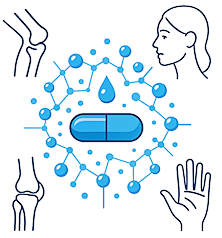
Hyaluronic Acid Capsules deliver a powerful dose of one of the body’s key joint and skin hydrators, helping maintain the slippery, shock-absorbing matrix that keeps knees, hips, fingers, spine, and skin feeling more comfortable and resilient.*
- In human studies, oral hyaluronic acid has been associated with improved joint comfort, easier walking, and better functional scores in adults with everyday knee and joint challenges. Other trials suggest benefits for skin hydration and fine-line appearance when taken consistently over several weeks to months.*
This unique supplement is intended to complement what your own body already does: draw water into the joint space, maintain synovial fluid quality, and keep the skin’s deeper layers supple. It is especially supportive for people who want to stay active as they age, or who place repetitive, daily load on their joints.
Scientific Perspective:
Hyaluronic acid is a major component of cartilage and synovial fluid, where it helps create viscosity and shock absorption. It also resides in the dermis of the skin, where it plays a central role in water retention and tissue repair.*These statements have not been evaluated by the Food and Drug Administration. This product is not intended to diagnose, treat, cure, or prevent any disease.
Supports Joint Cushioning & Skin Hydration From Within
Hyaluronic Acid Is Concentrated in the Joints, Skin, Eyes & Other Connective Tissues.
Your body stores much of its hyaluronic acid in synovial fluid, cartilage, and the deeper layers of the skin. There it helps create lubrication and shock absorption in joints, and locks moisture into skin to keep it more supple and resilient. As natural production declines over time, people may notice more stiffness when getting up, “crunchy” movement after activity, or a gradual loss of youthful skin plumpness.
Thoughtful hyaluronic acid supplementation is a simple way to give the body more of the molecule it already uses to cushion, glide, and hydrate tissues from the inside out.
Why Hyaluronic Acid Levels Drop — And What That Means for You
Hyaluronic acid is constantly being built and broken down. Factors like aging, high sugar intake, smoking, UV exposure, and chronic inflammatory stress can accelerate breakdown, leaving less HA available to maintain ideal joint fluid and skin hydration.
Supplying hyaluronic acid in supplemental form is a way to help your body keep up with demand. It does not replace movement, nutrient-dense food, or rest, but it amplifies all three by giving the body more of the raw material that physically supports comfortable movement, mobility, and healthy-looking skin.
Each bottle of our Hyaluronic Acid Capsules contains 120 capsules, allowing you to build and maintain a steady intake over time.
Hyaluronic acid has been used for decades in eye surgery, orthopedics, and cosmetic dermatology. Oral supplementation is a gentler, systemic way to support joint comfort and skin hydration across the whole body as part of a healthy lifestyle.
Below you’ll find a deeper dive into how hyaluronic acid works, who may benefit most, and how to use it alongside collagen, vitamin C, and other foundational nutrients.

Hyaluronic Acid — A Cornerstone Molecule for Joint Comfort and Easy Movement
Hyaluronic acid is a major contributor to the thickness and slipperiness of synovial fluid, the “joint oil” that lets bones glide smoothly over one another. When synovial fluid is well-hydrated and viscous, everyday movements—standing up, climbing stairs, walking long distances—tend to feel more comfortable and less “creaky.”
Over time, natural HA levels usually trend downward, especially in weight-bearing joints that have handled years of load. Providing additional hyaluronic acid supports the body’s efforts to maintain that fluid cushion, so joints can better handle the normal mechanical stresses of life.
Ten Reasons Hyaluronic Acid Belongs in a Serious Joint & Skin Support Program
— for people who want to stay active, comfortable, and confident in their own skin
Hyaluronic acid is not a stimulant or a band-aid. It is a structural molecule that “waterproofs” and cushions tissues. Here are ten reasons it has become a foundation nutrient for healthy aging:
- 🦴 Hyaluronic acid is a primary component of synovial fluid, the lubrication that allows smooth movement in knees, hips, shoulders, and other major joints.
- 💦 It can hold many times its weight in water, helping tissues retain moisture and resist compression, like a built-in shock absorber for your cartilage.
- 🌸 In skin, hyaluronic acid is a key molecule behind a plump, hydrated, youthful appearance, helping support elasticity and smoothness from the dermal layer outward.
- 👁️ It is also found in the vitreous humor of the eyes and in gums, supporting comfortable moisture levels and healthy connective tissue structure.
- 📊 Clinical research on oral hyaluronic acid shows support for joint comfort, walking distance, and functional scores in adults with everyday knee and joint challenges.*
- 🧴 Trials on skin suggest that oral HA can help increase skin hydration and improve fine-line appearance when used consistently over time.*
- 🤝 Hyaluronic acid works especially well when paired with collagen, vitamin C, magnesium, and gentle movement, giving the body the building blocks and signals needed for ongoing repair.
- 🌿 Because it is non-stimulant, hyaluronic acid can be taken long-term as part of a daily support plan without affecting sleep or energy rhythms.
- 😊 By supporting comfortable joints and supple tissues, HA indirectly supports more movement, better mood, and more engagement with daily life—all key to healthy aging.
- 🧬 Hyaluronic acid is a body-identical molecule; your cells already understand it. Supplementation simply increases the availability of something your body naturally uses to stay flexible and hydrated.
Not all hyaluronic acid products are the same. Molecular weight, purity, and capsule content matter. Our supplementation formulation is designed to provide a clean, focused, daily-use supplement that can be stacked with your other foundational nutrients for long-term benefit.
Most People Accept Stiff Joints & Fine Lines as “Normal” — Hyaluronic Acid Says Otherwise

(Why hyaluronic acid may be the most overlooked joint-and-skin support molecule in modern life)
We are often told that stiffness, “creaky” movement, and increasingly dry skin are just part of getting older. While aging is real, giving up the raw materials that keep tissues hydrated and cushioned is optional. Hyaluronic acid is one of those raw materials, and most people have never been told that it exists, let alone that it can be supported.
Hyaluronic acid is a major component of the extracellular matrix that surrounds and stabilizes cells. In joints, it helps maintain thick synovial fluid. In skin, it holds water between collagen and elastin fibers. In eyes and gums, it supports soft, resilient tissue. As levels drop, tissues feel and look less forgiving.
By supplying more of this body-identical molecule on a regular basis, you give your biology permission to keep cushioning and hydrating instead of gradually drying out and stiffening.
Why Hyaluronic Acid Is So Underrated
People see the word “acid” and think harsh. In reality, hyaluronic acid is gentle and structural, not caustic. It does not peel or burn; it simply holds water in place. For decades it has been used in eye surgery and joint injections, but only recently have people begun realizing that a daily oral form can support the same tissues from within.
In an age of blue light, hard surfaces, long sitting, and ultra-processed food, hyaluronic acid helps re-create the hydrated, cushioned environment your joints and skin were meant to live in.

A Simple, Daily Habit with Compounding Benefits
The most powerful effects of hyaluronic acid tend to be quiet and gradual: stairs feel easier; morning movement is smoother; the face in the mirror looks a little more rested and hydrated; hands and knees complain less after an active day. These are not overnight miracles; they are the natural result of consistently supplying a structural molecule that tissues are hungry for.
Hyaluronic Acid Capsules are built for people who want to invest in connective tissue health now, instead of waiting for joints and skin to send louder messages later.
Final Thought
If you are already using collagen, omega oils, magnesium, and good food to support joint and skin health, hyaluronic acid is the missing hydration layer. If you are just getting started, it is one of the smartest early additions you can make.
This is what serious, informed people take when they are ready to actively support their joints, skin, and connective tissues for the long haul.
The Many Ways Hyaluronic Acid Helps
Hyaluronic Acid Helps Support Comfortable, Cushioned Joints

Hyaluronic acid is central to the quality of synovial fluid—the thick, gel-like fluid that bathes cartilage surfaces. When synovial fluid is well supplied with HA, it tends to be more viscous and lubricating, helping reduce friction during normal joint movement. Many people notice that with consistent HA intake, everyday tasks such as getting out of chairs, walking up hills, and staying on their feet feel more comfortable.
Because hyaluronic acid is a structural component, it works best as part of a daily routine that includes movement, strength work, and anti-inflammatory nutrition. The goal is not to override the body, but to give it the materials it needs to keep movement smooth.
Hyaluronic Acid Helps Support Hydrated, Supple Skin

- The dermis (deep layer of skin) stores large amounts of hyaluronic acid, where it binds water and supports smooth, plump, elastic skin.
- Oral HA supports the body’s natural ability to hold moisture in the skin, complementing topical products, good fats, and antioxidants.
- Many people taking hyaluronic acid along with collagen and vitamin C report improved skin “bounce,” more comfortable dryness, and a more radiant look over time.
Hyaluronic Acid Helps Support Healthy Aging of Connective Tissues and Everyday Mobility

- Connective tissues (ligaments, tendons, fascia, discs, skin) all rely on a well-hydrated, gel-like matrix to resist wear and tear, to move smoothly, and to absorb the forces of daily living such as walking, lifting, and stretching.
- Hyaluronic acid is one of the key molecules that fills the space between collagen fibers, helping tissues stay cushioned instead of brittle, so they can bend, twist, and rebound rather than grind, crackle, or feel stiff and fragile.
- Supporting Hyaluronic Acid as we age is like telling your body, “keep these tissues young as long as you can,” especially when paired with regular movement, strength training, consistent daily hydration, and a generally nutrient-rich lifestyle that favors repair over breakdown.
Hyaluronic Acid & Everyday Activity

Whether you are walking for health, playing pickleball, chasing grandchildren, gardening, or doing strength training at the gym, your joints experience thousands of tiny micro-impacts and wide ranges of motion each day. Hyaluronic acid helps maintain the smooth, gel-like lubrication inside joints so that this constant movement feels easier, more fluid, and less punishing over time. Hyaluronic acid supports:
- Comfortable, well-lubricated movement during and after activity, so you can cool down, rest, and resume your day without feeling as stiff or “creaky.”
- Better tolerance for repetitive motions inherent to work, hobbies, and sports—such as swinging a racket, lifting groceries, typing, or climbing stairs.
- A greater sense that your joints are “ready” to move instead of bracing or resisting, helping everyday tasks feel smoother, more confident, and under your control.
Hyaluronic Acid & Vascular / Tissue Integrity

Hyaluronic acid is present in the extracellular matrix of many tissues, including blood vessel walls and the support scaffolding that surrounds them. By binding and organizing water, it helps maintain a hydrated, flexible environment that allows cells, nutrients, oxygen, and signaling molecules to move efficiently through both tiny capillaries and larger vessels. This supple, gel-like matrix works like a biological cushion and spacer, helping tissues maintain their natural shape and preventing them from becoming dry, compressed, or fragile over time.
Because hyaluronic acid is woven throughout the body’s connective tissue network, it quietly supports the integrity and resilience of structures that wrap the heart, arteries, veins, skin, joints, and even internal organs. In practical terms, healthy HA levels help tissues:
- Stay better hydrated, which supports flexibility instead of stiffness in vessel walls and surrounding connective tissue.
- Maintain a smoother matrix through which blood cells, immune cells, and nutrients can travel and communicate.
- Buffer against everyday mechanical stressors, such as changes in pressure, movement, and posture.
- Work together as a coordinated network, rather than isolated parts, supporting a more resilient “whole-system” foundation.
Hyaluronic acid is not a cardiovascular drug and is not intended to diagnose, treat, cure, or prevent disease. However, consistently supporting healthy connective tissue structure everywhere in the body is one of the quiet, background ways we invest in long-term comfort, circulation, and whole-body resilience as we age.
What Hyaluronic Acid Actually Is
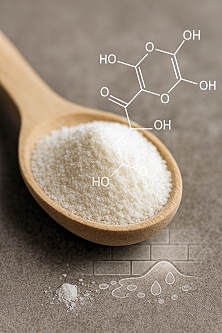
Chemically, hyaluronic acid is a long-chain polymer made of repeating sugar units (N-acetylglucosamine and glucuronic acid). Think of it as a silky strand of natural “water magnets” that your body strings together by the thousands. The body then weaves these chains into its connective tissue matrix to bind water, resist compression, and create glide between layers of tissue. One well-formed molecule can hold many times its own weight in water, puffing up like a tiny sponge, which is why it is so critical wherever cushioning, smooth motion, and deep hydration matter—in joints, skin, eyes, and more.
Because hyaluronic acid is naturally present in the body from head to toe, supplementing it is conceptually similar to adding more bricks to a wall your body is already building—not introducing a strange, foreign compound it has never seen before. You are simply offering extra raw material so your system can refresh the “cushioning layer” it depends on. In everyday terms, it is more like topping off the fluid in your car so it runs smoothly than overhauling the engine—a gentle, supportive way to help your body do what it is already designed to do.
Why Your Body Is Constantly Making & Using Hyaluronic Acid
Hyaluronic acid has a rapid turnover rate. In joints and skin, it is continually broken down and rebuilt. In a healthy environment, this allows the body to repair and remodel tissues dynamically. When nutrient status, hydration, and lifestyle are suboptimal, breakdown can outpace rebuilding.
Supporting HA through diet, lifestyle, and supplementation helps the body keep up with this demand so it can maintain lubrication and hydration instead of gradually surrendering it.
Help Your Body Help Itself — Why We Recommend Hyaluronic Acid

Hyaluronic acid is one of the best examples of our guiding principle: give your body what it needs, and it can do miracles..
Rather than fighting symptoms with stimulants or numbing agents, hyaluronic acid helps tissues do their job better by helping them achieve a well-hydrated extracellular matrix. When you pair hyaluronic acid with wise food choices, movement, sleep, and stress management, your entire body, including all its cells and tissues, will work more smoothly.
You do not have to surrender easy movement and comfortable joints to the passage of time without a fight. Hyaluronic Acid Capsules are one of the simplest daily habits you can adopt to remind your body what “well-cushioned and hydrated” feels like.
Food First — Then Targeted Support Like Hyaluronic Acid
Our first rule of health is still that food should be our primary medicine: whole foods, collagen-rich broths, healthy fats, abundant vegetables, and careful movement do the heavy lifting. Hyaluronic acid fits the second rule: use supplements when they directly support the body’s own structure and chemistry, not just as isolated “magic bullets.”
- You cannot out-supplement a poor diet or sedentary lifestyle, but you can give your connective tissues an extra margin of support with thoughtful, body-identical molecules like hyaluronic acid.
- Stacking hyaluronic acid with collagen, vitamin C, magnesium, omega oils, and anti-inflammatory phytonutrients can create a synergistic environment for joint, skin, and connective tissue health.
Hyaluronic Acid Capsules
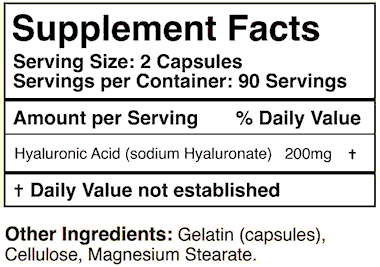

How to Use Hyaluronic Acid Capsules
Typical use is 2 to 4 capsules daily, taken with or without food, or as directed by your healthcare professional. Many people find it helpful to take Hyaluronic Acid consistently for at least 4–8 weeks to sense its full impact.
Videos about Hyaluronic Acid
We disclaim any claims (if there are any) made in these videos. They are for information, education, enlightenment and entertainment only.


